Unlimited Elements Dynamic Loop Builder
The default Posts and Archive widgets that come with Elementor Pro are fine, if you just want ordinary, but they are limited if you want to do anything special. For example, suppose you want to show a custom field in your archive? You can’t do that out of the box with Elementor Pro, but you can if you use Unlimited Elements. In this tutorial we’ll take a look at the Dynamic Loop Builder that comes with Unlimited Elements for Elementor. Note, you will need the pro versions of both Elementor and Unlimited Elements to follow along.
Video Version
Overview of Unlimited Elements for Elementor
You’ve probably noticed that there are a lot of Elementor addons out there. For that reason, I prefer to focus on ones that bring something unique and aren’t just another collection. Unlimited Elements is one of those unique solutions that helps to fill in the gaps with default Elementor and makes your site more interesting.
Free Version

There is a free version of Unlimited Elements available in the WordPress plugin directory. The free version has more than 100,000 active installs. The plugin has 179 five star reviews and the team is very active helping to answer user support questions.
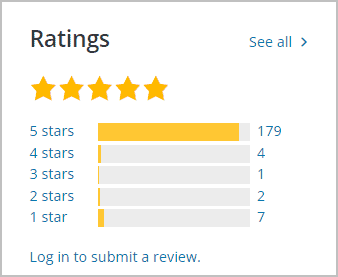
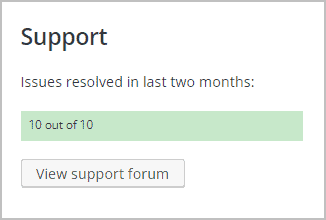
Unlimited Elements comes with literally a ton of widgets. There are more than 100 in the free version.
Pro Version
You purchase the pro version from the Unlimited Elements website. There are more than 200 widgets in the pro version.

They have a pretty extensive documentation library.
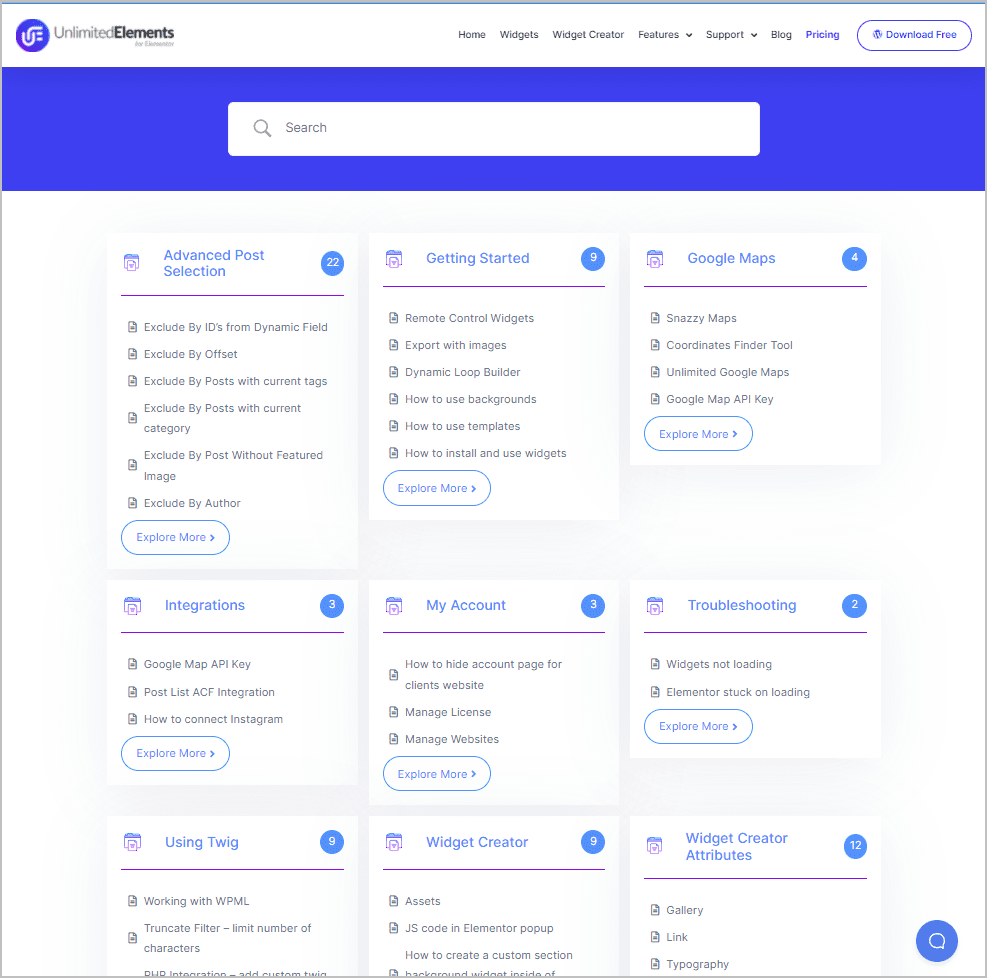
They also have a nice YouTube channel, which is worth checking out.
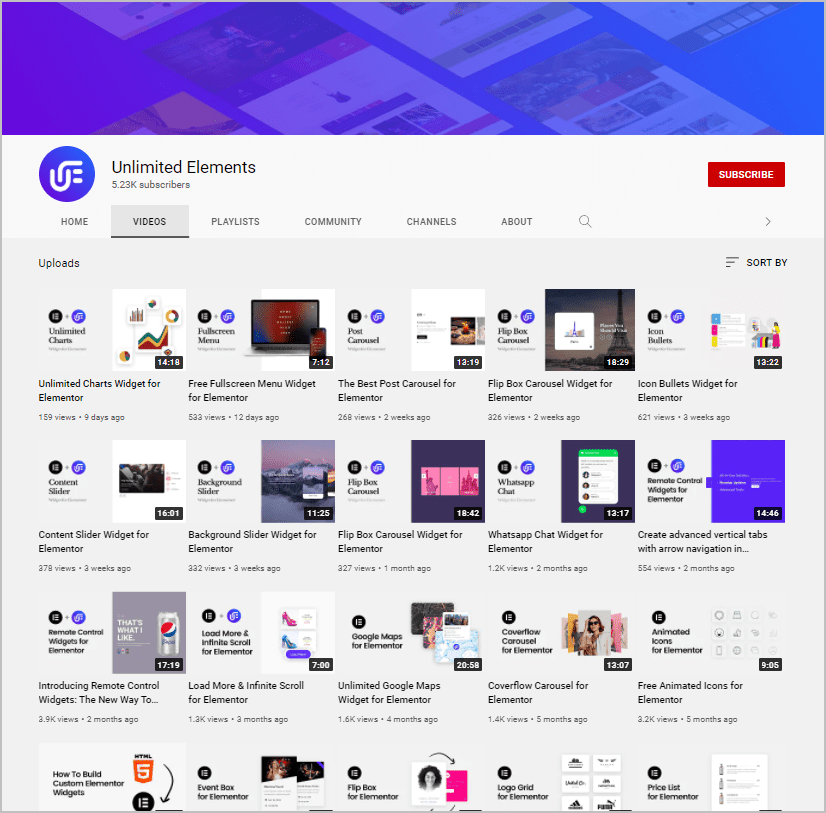
The offer packages annual or lifetime for 1, 5, or unlimited sites. Note that Unlimited Elements uses Freemius for licensing and updates.
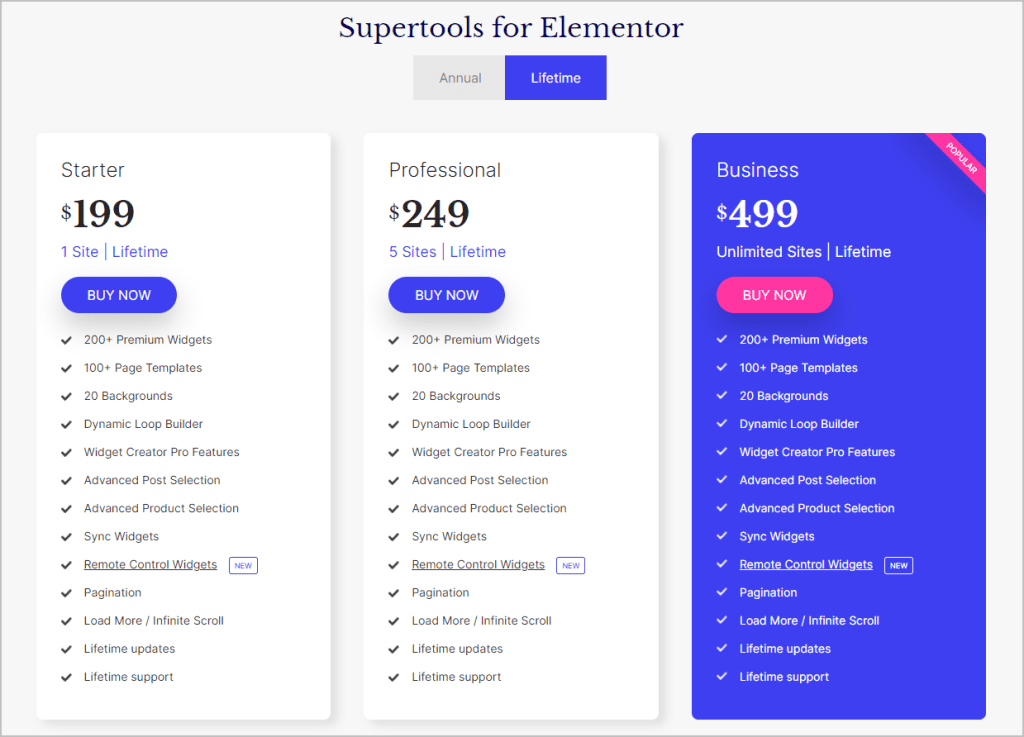
Creating the Custom Archive
Here are the plugins that I have installed on my testing site. There is Elementor and Elementor Pro. Unlike some pro versions, Unlimited Elements doesn’t require the free version to also be installed, so that’s nice.
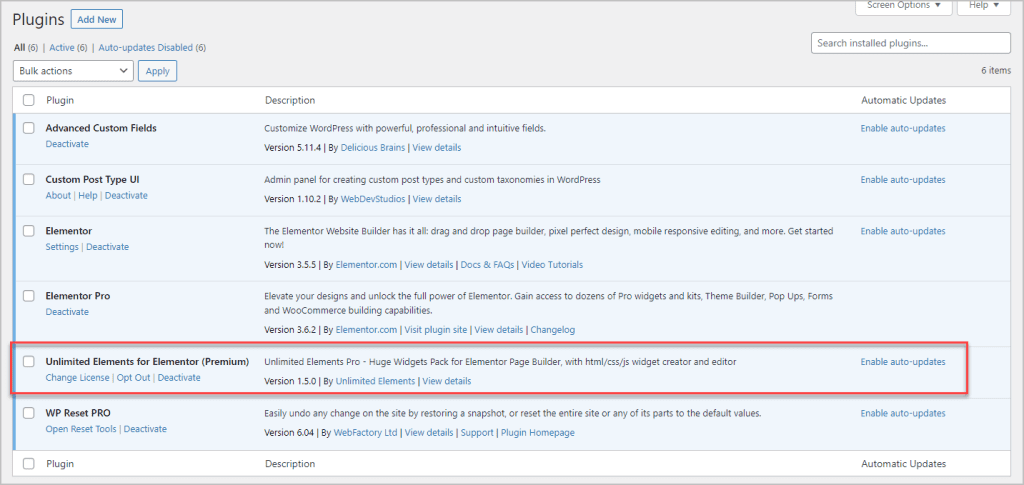
You get a new admin menu area and here I have the Dynamic Template Grid widget downloaded. The ones that say “web” need to be downloaded if you plan to use them.
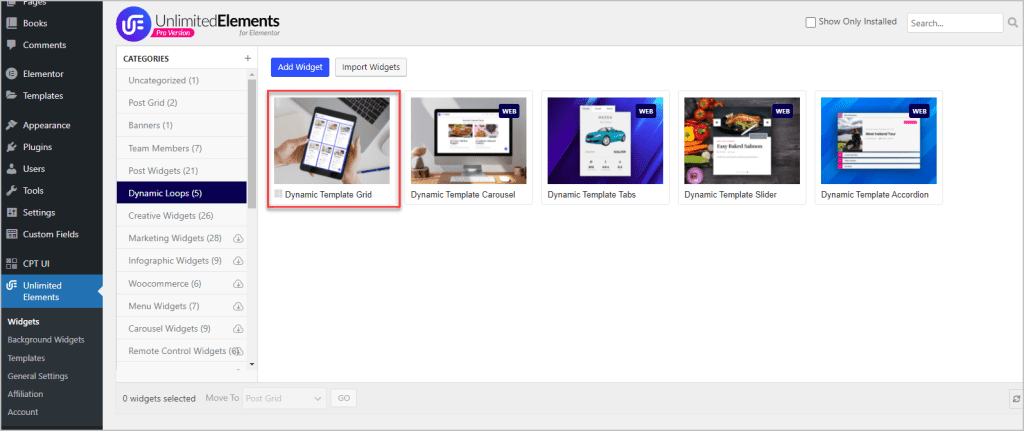
We will also need the Post Pagination widget, so I’ve downloaded that also.
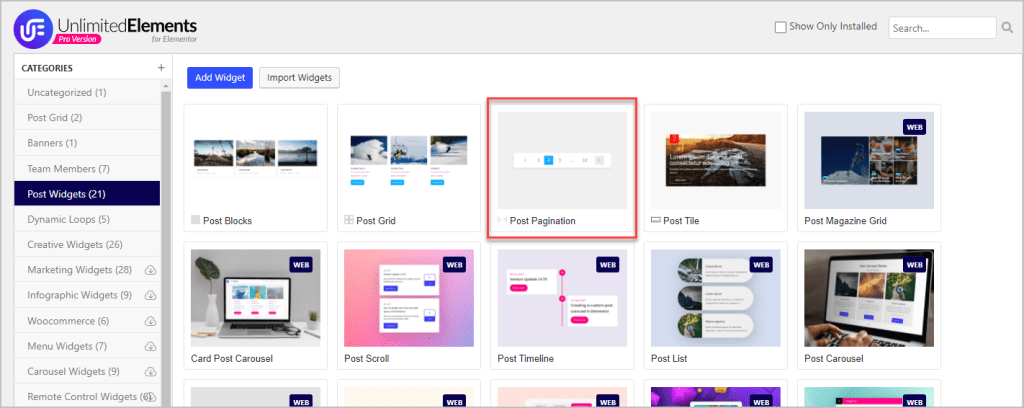
Using the Dynamic Loop Builder has two steps. First you use the Elementor Pro theme builder to create a “single post” template. This template will act as the single item in the loop whose layout and style is applied to all of the other items. When you hover over it you see a blue circle with a plus sign to create a new one.
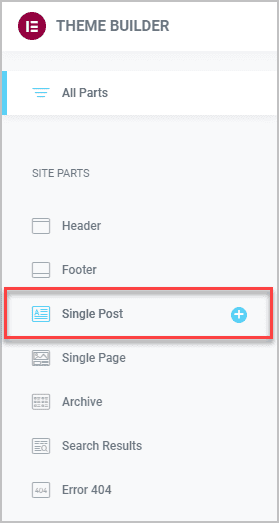
Inside the Elementor editor click on the cog in the lower left corner and then adjust the preview settings by selecting a record to be used a the preview in the editor.
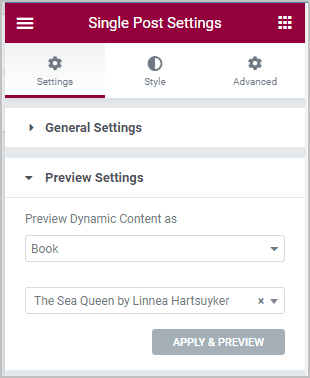
Here I have created a single book card by first placing a section, then adding the Featured Image widget and setting the size to medium and centering it. Under that I added the Post Title widget and adjusted the font size and centered it. Next I added the Post Info widget and selected the fields I wanted to show. Here you see I selected a taxonomy term to show the favorite and adjusted its icon. Under that I add the excerpt. We don’t have to worry about it being so wide. When it is added to the grid later that will constrain it. Under the excerpt I add an Inner Columns widget. On the right side is a button with a label of Read more. I set the link to go to the Post URL by clicking on the database icon to access the dynamic data. On the left side is another button, this one with a label to go to the Author’s Website. I clicked on the database icon for this one also then scrolled to the bottom of the list to pick the ACF URL field for the Author’s website. I aligned this one to the right so they would be side by side. Finally, I selected the column itself and gave it a background color, a border, and rounded the corners a bit. I saved that and exited to the admin. We don’t need to set a location rule for this. In the admin I renamed this template to Single Book Item.
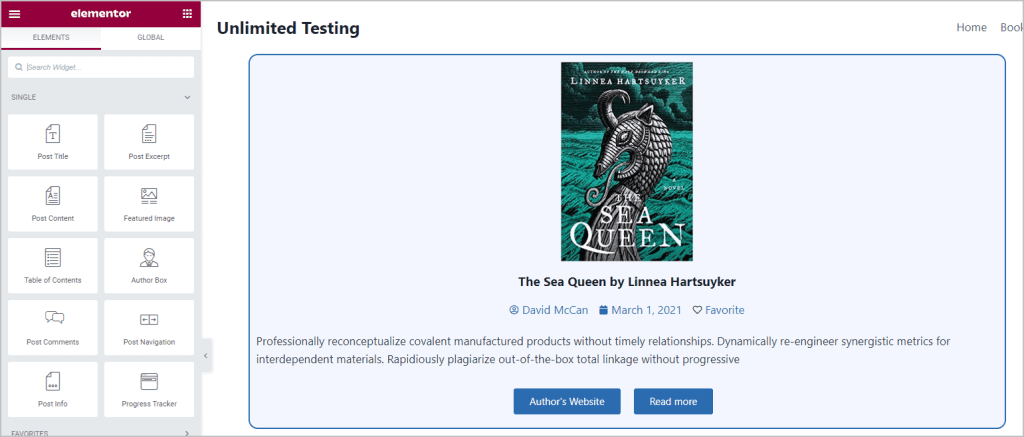
Now we are ready to create the Book Archive. Back in the theme builder we click on archive and add a new one. In the editor we add a section and give the page a title by adding a Heading widget. Under that is some text and then another section. In this section we add the Unlimited Elements Dynamic Template Grid widget.

Drag that into the new section and in the General settings pick the template that we just created.

Set the number of columns in the Grid panel and in the Items Posts Query panel pick the Custom Post Type.
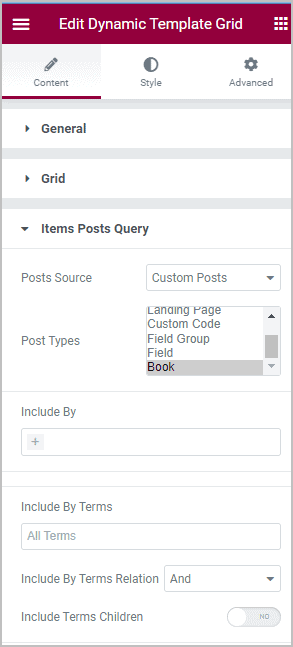
Finally, pick the pagination option for using the Pagination widget. Then add the Pagination widget under the grid.
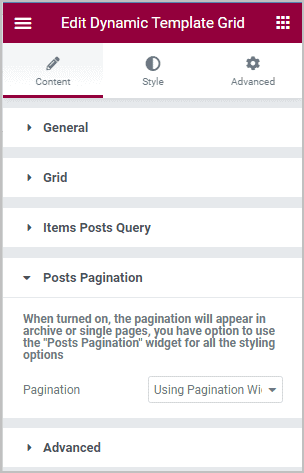
Great, it should be looking good.
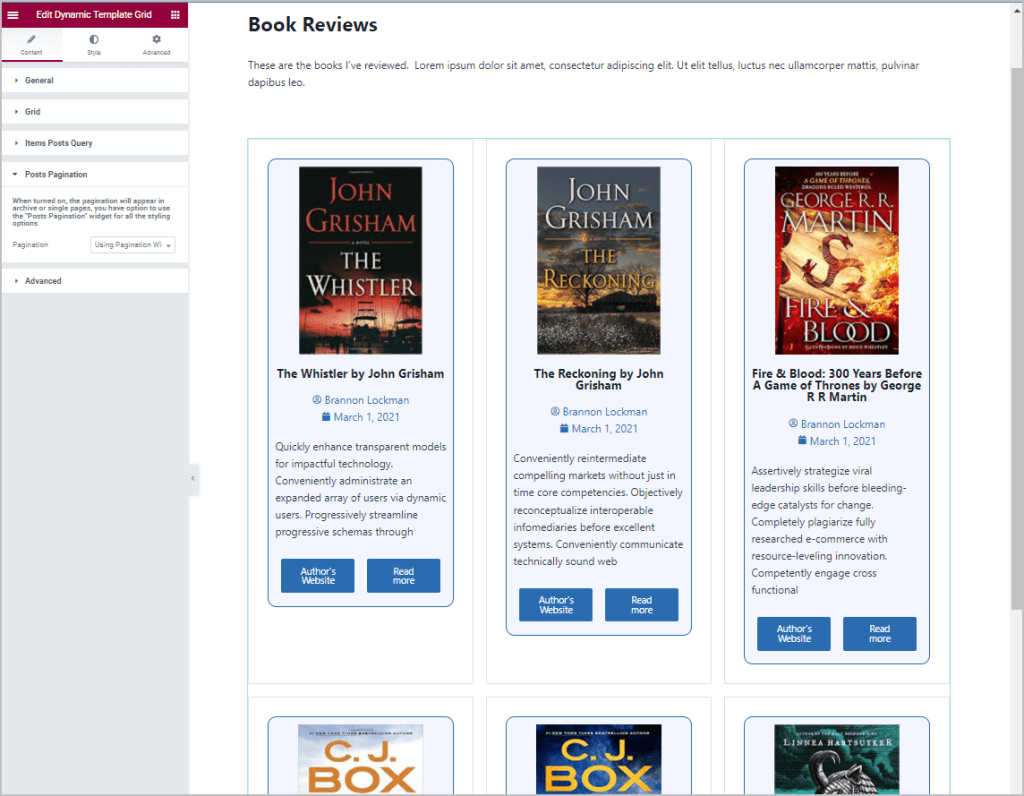
And this is what it looks like on the front. We have our button with the custom field. Sadly you can’t do that yet with Elementor Pro.
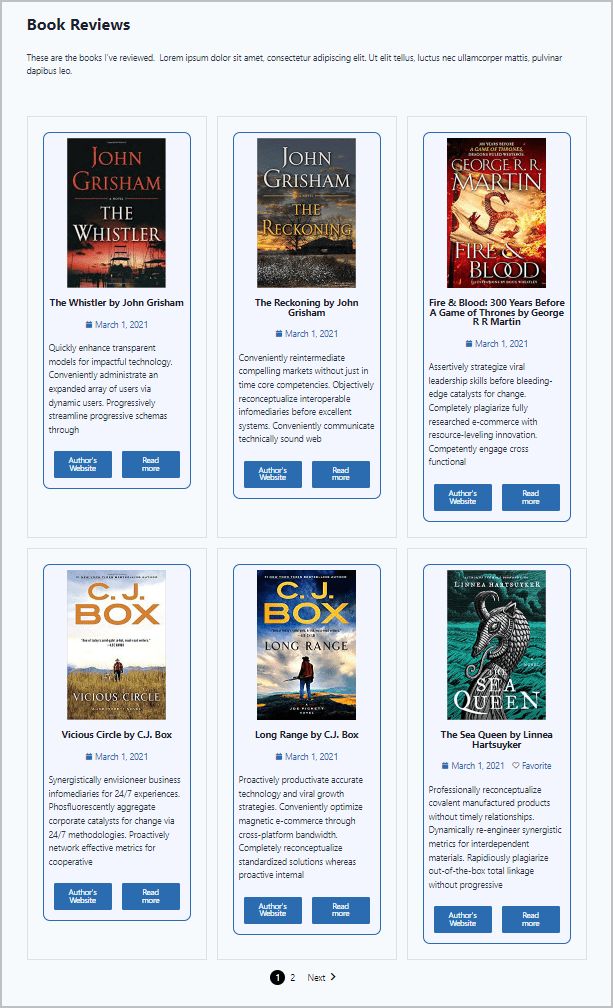
Summary and Conclusion
What I’ve seen working with Unlimited Elements is that they have taken a modular approach. For example, you have lots of widgets, but you only download to the site the ones you want to use. Unlimited Elements is also flexible. You can use the widget builder to create your own widgets or modify one of the existing ones. This allows you to change the layout, styling, and even add custom fields. The Dynamic Loop Builder is another example of that flexibility. It lets you create your own custom grid item to overcome the limitations of the Elementor Pro posts and archive widgets. I found that using the Dynamic Loop builder was straightforward and easy.
Unlimited Elements isn’t the only plugin that addresses the limitations of the Elementor Pro Posts and Archive widgets. Ele Custom Skins and Dynamic Content for Elementor also let you create a custom loop. So, I wouldn’t purchase Unlimited Elements just for this feature. However, if you have Unlimited Elements or you want to buy it to use its Widget Builder or widget collect then the Dynamic Loop Builder is a nice addition to your toolbox.
So, that’s my look at the Dynamic Loop Builder. I hope you’ve found this walk-through useful.
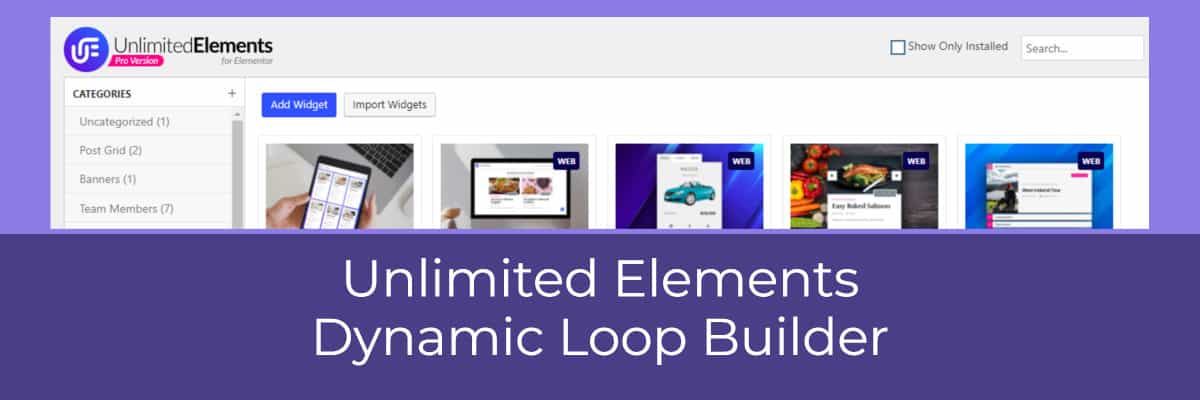
Can this approach be used to create a search results page? And if so, exactly how would I do it? Perhaps a separate tutorial?I have both Unlimited Elements Pro and Dynamiv Content Pro.
I don’t think so because you’d need to use the search term from the search input box in your query for the widget and I don’t see that as an option.
The guys at Unlimited Elements do build things based on user requests, so they might be able to give you guidance or add that ability.
Hi Bill,
I see that Dynamic Content for Elementor has a search results widget! I think this is just what you are looking for. You can use it with either the Dynamic Content for Elementor theme template system or with Elementor Pro’s theme builder.
Best,
David